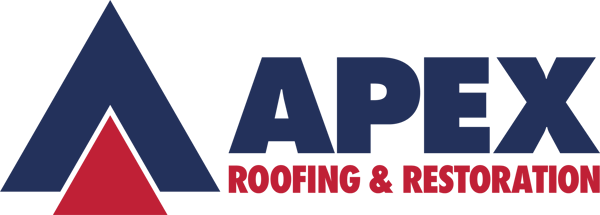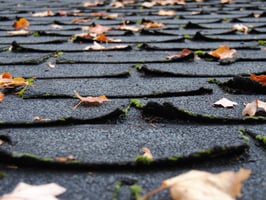Replacing a roof is a significant investment, and costs can vary widely depending on your location,...
How to Schedule a Residential Roof Inspection: A Homeowner’s Checklist
Your roof is one of the most important components of your home, protecting you from the elements and ensuring your family’s safety and comfort. However, many homeowners don’t think about their roof until a problem arises, such as leaks, missing shingles, or storm damage. Regular roof inspections can help prevent costly repairs and extend the lifespan of your roof.
If you’re wondering how to schedule a roof inspection and what to expect, this roof inspection checklist will walk you through the process step by step.
Why You Need a Roof Inspection
Scheduling a professional roof inspection is essential for several reasons:
- Identifying Damage Early – Small issues like loose or missing shingles, rusted/weathered flashing, or water damage can turn into costly repairs if not addressed.
- Prevent Leaks & Water Damage – An inspection can catch leaks before they cause significant damage to your home’s interior.
- Extend Your Roof’s Lifespan – Routine maintenance can add years to your roof’s life, saving you from early replacement costs.
- Increase Home Value – A well-maintained roof improves your home’s curb appeal and market value.
Now that you understand the importance of roof inspections, let’s go over how to schedule one with a roof inspector.
Step 1: Determine the Best Time for a Roof Inspection
While you can schedule a roof inspection at any time, there are certain periods when it’s most beneficial:
- Seasonal Inspections: Spring and fall are ideal times to check for damage caused by winter snow or summer heat.
- After a Storm: High winds, hail, or heavy rain can cause damage that isn’t immediately visible. A post-storm inspection can help assess any issues.
- Before Selling or Buying a Home: If you’re selling your home, an inspection can provide a clean bill of health for your roof. If you’re buying a home, a roof inspection ensures you’re not inheriting costly repairs.
- If You Notice Warning Signs: If you see missing shingles, granulation, wash out, water stains on your ceiling, or sagging areas on your roof, it’s time to schedule an inspection.
Step 2: Research a Roofing Company
Not all roofing companies are the same, so it’s important to choose a reputable company that offers professional roof inspections. Here’s what to look for when searching for a “roofing company near me”:
✅ Licensed & Insured – Ensure the roofing company has the proper licensing and insurance coverage to protect you in case of accidents.
✅ Experience & Reputation – Look for a roofing company and roofing contractors with years of experience and positive customer reviews.
✅ Comprehensive Services – A good roofing company will offer inspections, repairs, and full replacements if necessary.
✅ Free Roof Inspections – Some companies offer free roof inspections, while others charge a fee that may be credited toward repairs.
To find a trustworthy roofing contractor, check online reviews and ask for recommendations from friends and neighbors.
Step 3: Contact the Roofing Company
Once you’ve found a reputable roofing company, it’s time to schedule your inspection. Most companies offer multiple ways to book an appointment:
📞 Call Your Roofing Company Directly: A quick phone call can get you scheduled and allow you to ask any questions.
📩 Email or Contact Form: If you prefer, you can send an email or fill out a contact form on their website for a callback.
When scheduling your appointment, be ready to provide:
- Your name and contact details
- Your home address
- Any specific concerns or issues you’ve noticed
- Your preferred date and time
Step 4: Prepare for Your Home Roof Inspection
Once your inspection is scheduled, take a few simple steps to prepare:
✔ Clear Driveway & Yard – Move vehicles and any outdoor furniture so the inspector has easy access to your roof.
✔ Provide Attic Access (If Needed) – Some inspections require an attic check for leaks and insulation issues.
✔ List Any Concerns – Make a note of any leaks, sagging areas, or other roofing issues you’ve noticed so you can discuss them with the inspector.
Step 5: What to Expect During the Inspection
A professional roof inspection typically includes the following steps:
Exterior Roof Inspection
🔍 Checking shingles, flashing, and gutters for wear and damage.
🔍 Identifying any cracks or loose shingles.
🔍 Examining chimney, vents, and other roof penetrations.
Interior Inspection (If Required)
🔍 Looking for water stains, mold, or insulation issues in the attic openings.
🔍 Checking for proper ventilation and airflow.
The process usually takes 30 minutes to an hour, depending on the size and complexity of your roof.
Step 6: Review the Roof Inspection Report
After the inspection, the roofing inspector will review:
- The current condition of your roof
- Any signs of damage or potential issues
- Recommended repairs or maintenance
- An estimate for any necessary work
If repairs are needed, you can discuss your options and get a quote for fixing any issues before they worsen.
Step 7: Schedule Roof Repair Services (If Needed)
If the inspection reveals damage, it’s best to schedule repairs as soon as possible. Your roofing contractor will provide a timeline and pricing details for any necessary work.
Options to Consider:
- Minor Roof Repairs: Fixing a few missing shingles or resealing flashing.
- Moderate Roof Repairs: Addressing leaks, replacing damaged areas, or fixing ventilation issues.
- Roof Replacement: If your roof is beyond repair, your contractor may recommend a full replacement.
Some roofing companies offer financing options if the cost of repairs is a concern.
Step 8: Keep Up with Routine Roof Inspections
To keep your roof in top shape, schedule a professional inspection at least once a year and after any major storms. Between inspections, you can also do quick visual checks to spot any early signs of damage.
DIY Roof Maintenance Tips:
🔹 Keep gutters clean to prevent water buildup.
🔹 Trim overhanging tree branches that could damage the roof.
🔹 Look for signs of wear after heavy storms.
🔹 Keep valleys free of debris.
Final Thoughts
Scheduling a roof inspection is an essential step in maintaining your home’s safety and value. Whether you’re proactive about regular inspections or responding to storm damage, following these steps will ensure a smooth and efficient process.
By choosing a reputable roofing company, preparing your home, and reviewing your inspection report carefully, you’ll have the peace of mind that your roof is in great condition—or the information you need to make necessary repairs.
Ready to schedule your free roof inspection? Contact Apex Roofing & Restoration today for a professional, hassle-free assessment!


.jpg?height=200&name=phil-hearing-IYfp2Ixe9nM-unsplash-min%20(2).jpg)
